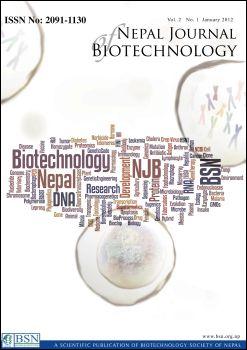Association Mapping for Improvement of Quantitative Traits in Plant Breeding Populations
DOI:
https://doi.org/10.3126/njb.v2i1.5686Keywords:
Association mapping, plant breeding, DNA marker, quantitative trait lociAbstract
DNA-based molecular markers have been extensively utilized for mapping of genes and quantitative trait loci (QTL) of interest based on linkage analysis in mapping populations. This is in contrast to human genetics that use of linkage disequilibrium (LD)-based mapping for fine mapping of QTLs using single nucleotide polymorphisms. LD based association mapping (AM) has promise to be used in plants. Possible use of such approach may be for fine mapping of genes / QTLs, identifying favorable alleles for marker aided selection and cross validation of results from linkage mapping for precise location of genes / QTLs of interest. In the present review, we discuss different mapping populations, approaches, prospects and limitations of using association mapping in plant breeding populations. This is expected to create awareness in plant breeders in use of AM in crop improvement activities.
Key words: Association mapping; plant breeding; DNA marker; quantitative trait loci
DOI: http://dx.doi.org/10.3126/njb.v2i1.5686
Nepal Journal of Biotechnology Jan.2012, Vol.2(1): 72-89
Downloads
Downloads
How to Cite
Issue
Section
License
Copyright Notice:
The manuscript submitted to NJB must be an original contribution, not previously published and should not be under consideration for publication elsewhere. When the manuscript is accepted for publication, the authors agree to automatically transfer the copyright of the article to the publisher. It should grant permission to any third party, in advance and in perpetuity, the right to use, reproduce or disseminate your article, according to the NJB copyright and license agreement.
Authors transfer copyright to the publisher as part of a journal publishing agreement but have the rights to: Share their article for Personal Use, Internal Institutional Use and Scholarly Sharing purposes, with the NJB applies the Creative Commons Attribution-NonCommercial CC BY-NC license to all the works we publish after Jun 2020 (Before it was CC BY-NC-ND). Under this license, authors agree to make articles legally available for reuse, without permission or fees, for virtually any non-commercial purpose. Anyone may remix, adapt, and build upon your work non-commercially, and although their new works must also acknowledge you and be non-commercial, they don’t have to license their derivative works on the same terms. More details on CC BY-NC refer to its Licence Deed and Legal Code.






